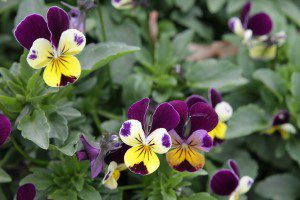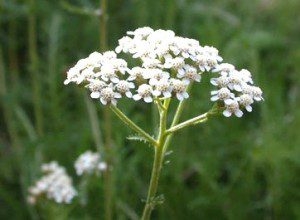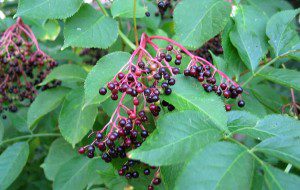Contributing writer for Wake Up World
For those who are in the thick of summer, now is a fantastic time to plant an outdoor medicinal garden. Don’t worry if you’re into winter, though — it’s also easy to grow a therapeutic herb garden on a sunny indoor ledge. Either way, creating a healing garden is a straightforward and rewarding pursuit, and is a great way to take charge of your day-to-day health and wellbeing. And best of all, it’s fun.
Several plants are well-known, others might be unfamiliar. But one thing is certain, all are powerful for promoting and sustaining optimal health.
Medicinal Gardens 101: Which plants are best?
If you have a sunny spot in your garden, on a deck or an indoor windowsill, the following plants will happily thrive:
Catnip (Nepeta cataria)
Considered the cannabis of the feline world, catnip is a first-class medicinal for those of the human sort. A gray-green perennial, catnip has been used extensively throughout the ages as a calming agent for the body and mind. It eases digestive and emotional disturbances, pain, restlessness, insomnia, headache and menstrual disorders. The herb is especially helpful for infants and children due to its mild nature. The oil of catnip is considered an effective insect repellant.
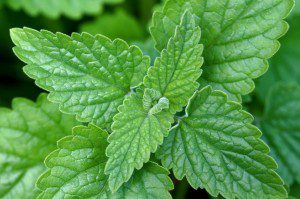 In France, the leaves and young shoots are often added to sauces and stews for a flavoring similar to mint and pennyroyal. Since the roots tend to be overly stimulating, however, it’s best to stick with the leaves for culinary/medicinal purposes.
In France, the leaves and young shoots are often added to sauces and stews for a flavoring similar to mint and pennyroyal. Since the roots tend to be overly stimulating, however, it’s best to stick with the leaves for culinary/medicinal purposes.
Herbal actions: calmative, diaphoretic, relaxant, carminative, astringent, digestive stimulant, insect repellant (volatile oil), emmenagogue, tonic.
Lavender (Lavandula officinalis)
If you suffer from irritability, anxiety, stress or insomnia, lavender is the herb for you. With its use traveling back thousands of years, lavender is a time-honored herb that uplifts the mood and encourages healthy circulation. It also demonstrates potent antibacterial, anti-fungal and anti-inflammatory properties.
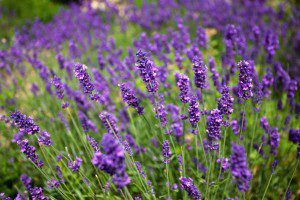 Lavender is often used in baked goods and is a unique component of herbs de Provence seasoning blends.
Lavender is often used in baked goods and is a unique component of herbs de Provence seasoning blends.
Herbal actions: analgesic, anti-inflammatory, antibacterial, anticonvulsant, anti-inflammatory, antimicrobial, antimutagenic, antioxidant.
Heartsease (Viola tricolor)
A wonderful botanical for cleansing the blood, heartsease also heals skin eruptions, relieves lung inflammation and promotes wound healing. These violet flowers are not only beautiful, they also soothe asthma, headaches and sore throats. Additionally, heartsease has been used to heal urinary tract infections, psoriasis, bronchitis and varicose veins.
The flowers are edible and can be used in salads, sherbet and puddings. Leaves of heartsease are most often prepared as a tea.
Herbal actions: antibacterial, diuretic, analgesic, anti-inflammatory.
Yarrow (Achillea millefolium)
Named for the Greek hero Achilles, legend has it that yarrow was used to treat the wounds of his fellow soldiers. A flowering perennial common in Asia, Europe and North America, it’s an excellent herb for supporting healthy skin and healing minor wounds. It encourages appetite and soothes discomforts of the gastrointestinal tract as well. However, caution should be used if allergic to ragweed.
Applications include: Infusions, juice from the fresh herb, tinctures, compresses and baths.
Herbal actions: Diaphoretic, astringent, tonic, stimulant, mild aromatic.
Rose (Rosa spp.)
Not just another pretty face, rose is an often overlooked medicinal flower. Containing notable levels of important antioxidants and gallic acid, rose flower exhibits strong antiviral, anti-fungal and anticancer properties. The sweet scent also protects against nervous disorders like stress, depression and anxiety. Rose water is well-respected for its ability to topically soothe distressed skin — including sun damage, premature aging, rosacea and eczema. It’s important to note that most commercially grown roses use high levels of pesticides, so always seek out organic varieties.
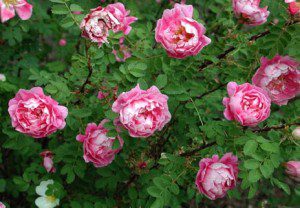 Herbal actions: anticancer, antidepressant, antiscorbutic, antispasmodic, aphrodisiac, aromatic, astringent, coagulant/hemostatic, cordial, depurative, emmenagogue, hepatic, laxative, nervine, cooling, sedative.
Herbal actions: anticancer, antidepressant, antiscorbutic, antispasmodic, aphrodisiac, aromatic, astringent, coagulant/hemostatic, cordial, depurative, emmenagogue, hepatic, laxative, nervine, cooling, sedative.
*If you find a particular plant is struggling indoors due to low light/heat/moisture, try using a glass cloche for better results. Heartsease is one plant that will enjoy the extra humidity and warmth created under the dome.
Honorable mention… Black elderberry (Sambucus nigra)
While not a herb in the strict sense of the word, black elderberry (Sambucus nigra) is worth noting due to its extraordinary healing merits. If you have the space, planting an elderberry tree is well worth the effort. Best known for its ability to ramp-up immunity and defend the body against contagious illness like colds and influenza, elderberry is also a nutritional powerhouse with a high antioxidant profile.
What’s more, research has found the berry decreases tumor growth by over 50 percent through antiangiogenic action (the hindering of unwanted blood vessel formation). Elderberry also curbs cardiovascular disease by mitigating the oxidation of low-density lipoprotein (LDL) cholesterol.
Learn more about this exceptional plant here.
How to Use Medicinal Plants
Once you’re healing garden is up and running, the next question is how to use the medicinal bounty. One of the simplest methods is to make an infusion or tea by steeping the leaves, stems and/or flowers in boiling water. A good rule of thumb is to use one-half to one-ounce of herb for every pint of water.
For woody parts like bark or roots, you’ll want to make a decoction. Boil the material in water for about five minutes, remove from heat, cover and let sit for up to ten minutes — depending on the hardness of the root/bark and how strong you would like the brew.
Cold extracts are similar to infusions, although you will need double the amount of herb, which is steeped in cold water for up to 12 hours.
Tinctures are made by steeping powdered dried herbs in a one-to-one ratio of alcohol (like vodka) and water for fourteen days. You will need to shake the bottle each day. At the end of the two weeks, strain the liquid and store in a clean container. The advantage of tinctures is that they are concentrated and have a long shelf life — up to three to five years.
Article sources:
- http://www.motherearthnews.com/natural-health/healing-garden-zmaz84mjzloeck.aspx
- http://www.homestead.org/KarynSweet/MedicinalGarden/MedicinalGarden2.htm
- http://www.hort.purdue.edu/newcrop/ncnu07/pdfs/charlebois284-292.pdf
- http://umm.edu/health/medical/altmed/herb/elderberry
- http://www.naturalnews.com/041632_rose_oil_cancer_inflammation.html
- https://www.mountainroseherbs.com/
- http://medicinalplants.us/lavender-actions#Lavender_Other_Actions
Recommended articles by Carolanne:
- Is Roundup Driving The Autism Epidemic? Leading MIT Researcher Says YES
- Over 100 Scientific Studies Agree: Cannabis Annihilates Cancer
- Emotional Energetic Healing: The Future of Medicine is Here
- Why Every Parent Should Consider Unschooling
- The Greenhouse of the Future: Grow Your Own Food Year-Round With This Revolutionary System
- Dry Skin Brushing Can Strengthen Immunity, Spark Detoxification and Reverse Aging
- Autistic Boy with Higher IQ Than Einstein Discovers Gift After Removal from State-Run Therapy
- Enhance Spiritual, Mental and Physical Well-being with a Pineal Gland Detox
- DIY $2 Self-Watering Garden Bed – Grow Produce Easily, Even in the Toughest Conditions
- How Being Too Clean Can Lead to Cancer, Multiple Sclerosis, Celiac Disease and More
About the author:
I’m Carolanne — a writer, chef, traveler and enthusiastic advocate for sustainability, organics and joyful living. It’s good to have you here. If you would like to learn more, connect with me at Thrive-Living.net or visit Twitter.com/Thrive_Living.
If you've ever found value in our articles, we'd greatly appreciate your support by purchasing Mindful Meditation Techniques for Kids - A Practical Guide for Adults to Empower Kids with the Gift of Inner Peace and Resilience for Life.
In the spirit of mindfulness, we encourage you to choose the paperback version. Delve into its pages away from screen glare and notifications, allowing yourself to fully immerse in the transformative practices within. The physical book enriches the learning process and serves as a tangible commitment to mindfulness, easily shared among family and friends.
Over the past few years, Wake Up World has faced significant online censorship, impacting our financial ability to stay online. Instead of soliciting donations, we're exploring win-win solutions with our readers to remain financially viable. Moving into book publishing, we hope to secure ongoing funds to continue our mission. With over 8,500 articles published in the past 13 years, we are committed to keeping our content free and accessible to everyone, without resorting to a paywall.


